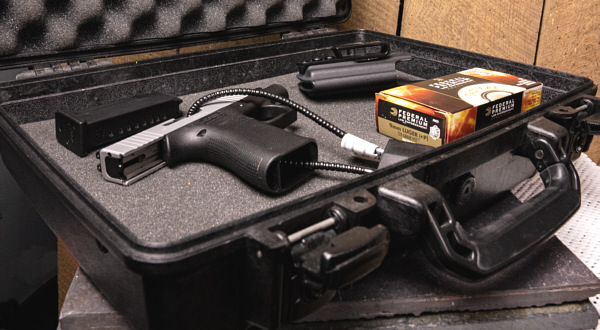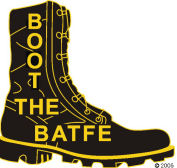

Air Travel With Firearms

By Randy Kozuch. May 21, 2024
Article Source
With the busy summer travel season starting, it seems an opportune time to discuss the various laws, regulations and best practices for commercial air travel with firearms. Many readers of this magazine are likely familiar with the process of traveling by air with firearms, but it's always good for even us experienced travelers to think about how we plan and pack before we travel. After all, making a simple mistake by missing even a single cartridge case in your carry-on bag can result in, at a minimum, long delays and a missed flight and may even result in expensive civil fines.
The Transportation Security Administration (TSA) recommends a process for passengers traveling with firearms called prepare, pack and declare. That is, prepare by knowing the laws and rules for traveling, pack in compliance with those rules and declare any luggage with firearms at the airline ticket counter.
The most important thing to remember when packing for air travel with firearms is that anything firearm related must be packed in checked luggage. This of course includes firearms and ammunition, but also includes firearm parts, magazines and even inert firearm training replicas. I've even heard of some travelers having trouble traveling with novelty items, like keychains that look similar to firearms.
As a general rule, if it's a part that works with a firearm or looks like a firearm, then it's probably best to put it in your checked bag. The only exception to this rule is optics. Riflescopes, spotting scopes and binoculars can go in your carry-on bag. And, for those who ascribe to the idea that your optic should cost as much or more than the rifle it goes on, it's understandable why many travelers might not want their expensive glass to take the turbulent trip that it seems our checked baggage takes between the aircraft and carousel.
At this point, it's important to note that I've only been discussing federal law and TSA rules and regulations. The various airlines can, and do, have more restrictive rules for traveling with firearms than the TSA. For example, while the TSA rules allow ammunition to be transported in detachable magazines that are not in the firearm, most airlines prohibit this practice. So, it's extremely important to check with your particular airline before you pack.
Packing Your Checked Bag
Firearms in checked bags must be in a locked, hard-sided case. This can either be a smaller hard-sided case, usually for a handgun, that is then placed in your larger suitcase, or a separate, larger hardcase that is needed when traveling with long guns. In either case, you must lock the case at every point where it is designed to receive a lock. So, cases with two locking points need two locks, those with four locking points need four locks, and so on. Failing to use a lock at all the locking points on a case may result in delays or your luggage not being loaded onto your aircraft.
As to the types of locks to use, while TSA now accepts TSA-approved locks for luggage containing firearms, NRA still recommends against using TSA locks. The applicable federal regulation says that the key to the lock must only be available to the passenger. With the ready availability of master keys for TSA locks, it isn't clear that these types of locks comply with the regulation. Even if they do, using locks that have readily available keys is likely a bad idea.
Up to 11 lbs. of ammunition of up to .75 caliber and shotshells may be transported in the same case used for a firearm or firearms. Ammunition must be packed in a separate container or containers within the case, and the container must fully enclose the ammunition. While the hard plastic ammo boxes commonly used by reloaders may seem optimal for this purpose, our experience at NRA has been that many airline personnel prefer to see ammunition in its original factory packaging.
When you get to the airport, it's best to just skip the self-service kiosks and head straight to the full-service line at the ticket counter. Once you declare the firearm at the ticket counter, you'll be required to fill out a firearm declaration card that will be placed in your luggage.
Packing Your Carry-On Bag
As I've said, any firearm, ammunition, parts or components must be placed in your checked bag. To ensure that none of these items end up in your carry-on baggage, it's a good idea to follow one very simple rule:
Start with an empty bag.
As someone who spends any amount of time around firearms or ammunition, this is a good rule to follow, even when you aren't traveling with a firearm. It's very easy for a round of ammunition that you removed from the chamber of a firearm or even a spent cartridge case to unknowingly end up in a backpack. Starting with a completely empty bag ensures that you don't run into any issues at the airport.
Following these simple rules ensures that you can safely and efficiently travel with firearms, so you won't run into any problems whether you're traveling with a firearm for hunting, competition or personal protection.
![]()
























